Diabetes, an abnormally high sugar level, is a silent killer in Nigeria. Currently, over 11 million Nigerians are living with the metabolic disease. If managed improperly, diabetes may cause vision loss, heart and kidney diseases, or death.
To avoid complications, you need a healthy diet, which is a challenge for Nigerians because everyday meals are starchy and fat-heavy. But in this post, we explain the diabetes-limiting foods diabetic Nigerians should add to their food menu.
What are superfoods and why should you care?
Superfoods contain diabetes-regulating nutrients (such as vitamins, antioxidants, and fiber) with few calories. Antioxidants—the protective enzyme that prevents cell damage—prevent insulin resistance and reduce oxidative stress (the imbalance between antioxidants and free radicals in the body). Vitamins help the body convert food to energy faster. They also improve glucose storage.
Fiber—the plant-based indigestible carbohydrates in fruits, cereals, and vegetables—also controls blood sugar. This is because the body can’t absorb or break down fiber, unlike other carbohydrates. It also decreases your appetite for food, which helps you control your weight.
Diabetes-friendly superfoods in Nigeria
1. Non-starchy vegetables
Non-starchy vegetables are rich sources of fiber, vitamins, and antioxidants. They also contain low carbohydrates, making them excellent for regulating blood sugar levels. Examples are mushrooms, cucumbers, broccoli, green beans, kale (locally called “efo Igbo” in Yoruba), cabbage, spinach, and okra (avoid frying okra and cook with limited oil).
In the Nigerian context, you may pair vegetable soups such as “edikaikong” (a mixture of pumpkin leaves, water leaves, and seafood), “efo riro” (amaranth or Nigerian spinach leaves), and bitter leaf soup with wheat. Use less palm oil during preparation to avoid a fat spike.
2. Fruits
 Generally, fruits supply essential nutrients and fiber. But they’re also rich sources of natural sugars, which may increase blood sugar levels. The glycemic index (GI) of fruits is a key factor to consider before including them in your diet. Using a scale of 0–100, the GI measures how quickly foods increase blood sugar levels. The faster the process, the more likely blood sugars will increase.
Generally, fruits supply essential nutrients and fiber. But they’re also rich sources of natural sugars, which may increase blood sugar levels. The glycemic index (GI) of fruits is a key factor to consider before including them in your diet. Using a scale of 0–100, the GI measures how quickly foods increase blood sugar levels. The faster the process, the more likely blood sugars will increase.
Diabetes-friendly fruits usually have a low (20–49) or medium GI (50–69). Examples are berries (e.g., strawberries and blueberries), the African cherry (or “agbalumo”), grapefruits, avocado pears, the Nigerian pear, and garden eggs.
Despite the dietary benefits of low-calorie fruits, always speak with your dietician or doctor for the exact volume and frequency of consumption suitable for you.
Besides, always consume fruits in their fresh form. Canned, processed, or dried fruits likely contain more sugar than your body needs. Likewise, remove fruits with a high GI, such as ripe bananas and watermelon, from homemade smoothies. Instead, fill it with non-starchy vegetables and fruits with a low GI, like mango.
3. Low-carb foods and beans derivatives
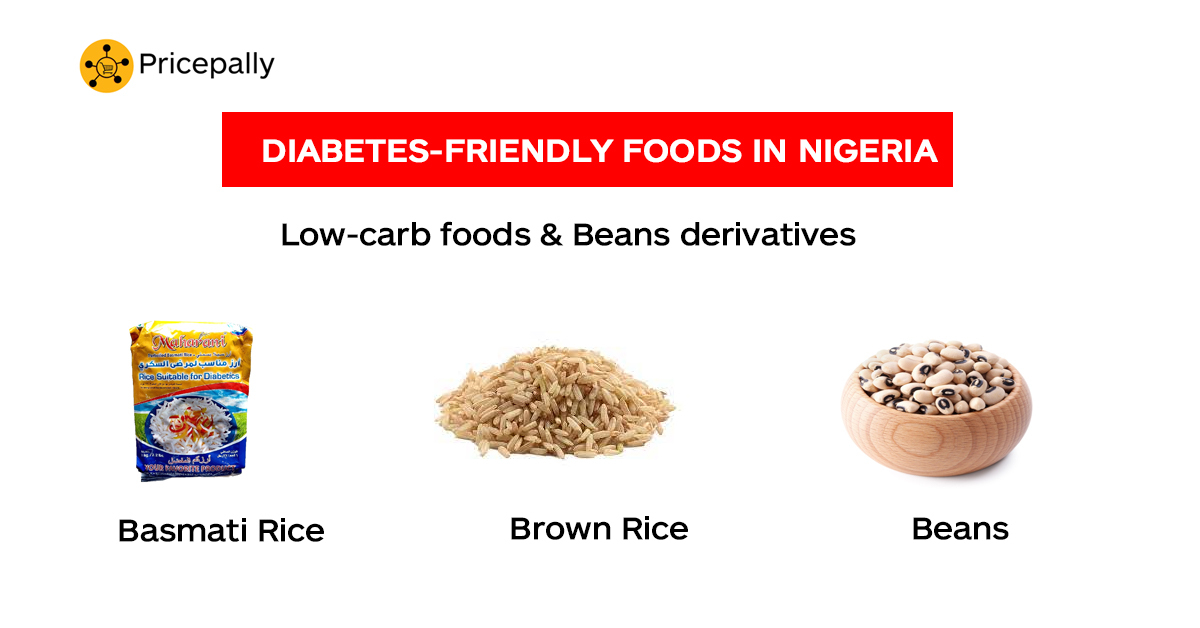 Starchy foods like white rice, potato chips, white pasta, and white bread contain high amounts of carbohydrates, which are likely to increase your blood sugar. But low-carb foods like basmati, brown, and wild rice have medium GI scores (56–69). They’re also packed with fiber and vitamins. However, consume them in moderation because cooking time may alter their GI scores.
Starchy foods like white rice, potato chips, white pasta, and white bread contain high amounts of carbohydrates, which are likely to increase your blood sugar. But low-carb foods like basmati, brown, and wild rice have medium GI scores (56–69). They’re also packed with fiber and vitamins. However, consume them in moderation because cooking time may alter their GI scores.

Boiled green plantains are also rich sources of resistant starch, the soluble fiber that improves insulin sensitivity and reduces food appetite.
Similarly, beans and bean-derived foods (e.g., “moi moi” and “akara”) are low-fat, diabetes-friendly Nigerian meals. Besides containing dietary fiber, beans furnish the body with essential nutrients like zinc, iron, and phosphorus. They also have a low GI score (10–40).
4. Fatty fish and nuts
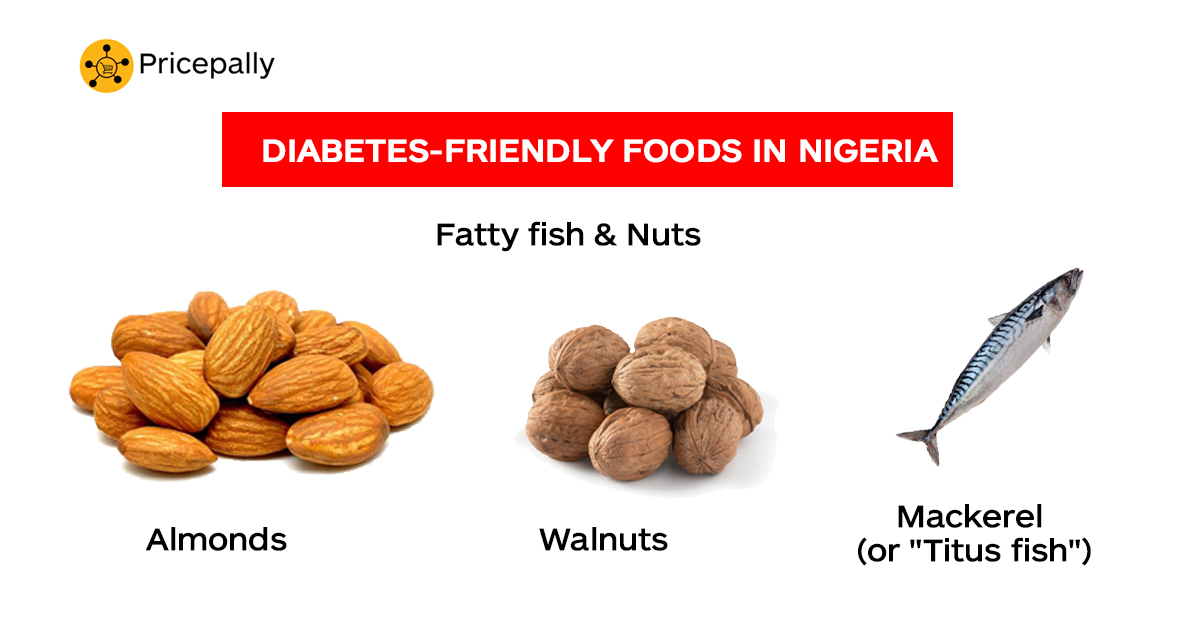 In diabetes management, the rule of thumb is to avoid fatty foods. But fish provides a rare combination of proteins and diabetes-healthy omega-3 fatty acids with low calories. The fatty acids help your body burn calories faster, making it easier to lose weight. Fish—especially salmon and mackerel (locally called “Titus fish” in Nigeria)—are also rich sources of vitamin D, which many type 2 diabetics lack.
In diabetes management, the rule of thumb is to avoid fatty foods. But fish provides a rare combination of proteins and diabetes-healthy omega-3 fatty acids with low calories. The fatty acids help your body burn calories faster, making it easier to lose weight. Fish—especially salmon and mackerel (locally called “Titus fish” in Nigeria)—are also rich sources of vitamin D, which many type 2 diabetics lack.
You can also go nuts with almonds and walnuts. They contain heart-healthy fats that regulate blood sugar. Like other diabetes-friendly foods, nut consumption requires portion control to avoid weight gain. Also, avoid nuts covered in sugar and salt—they’re unhealthy for blood pressure.
Which online grocery store sells diabetes-friendly foods in Nigeria?
As a diabetic, the state of your food matters as much as your diet. Fresh food products, especially fruits and vegetables, contain nutrients in their “natural” state, which is the best nutrient state for you.
Pricepally, the online supermarket store, lets you order fresh fruits, vegetables, and other diabetes-friendly food items at affordable prices. We also deliver to your doorstep. There’s no comfort with accessibility. This is why we have a channel for everyone to take your orders—the web app, mobile app, and April (the WhatsApp shopping assistant).
Frequently Asked Questions about Diabetes
How often should diabetics eat?
Generally, the frequency and portion of food diabetics consume vary. That said, in 2019, medical experts advised type 2 diabetics to follow the natural “body clock” eating pattern. This means eating three meals a day to avoid weight gain.
What fruits should I avoid for diabetes?
Avoid fruits rich in natural sugars (i.e., high GI); they increase the blood sugar level. Examples include watermelon, ripe bananas, and pineapples.
Can I take energy drinks as a diabetic?
Energy drinks, coffee, and soda contain high amounts of sugar and caffeine, which may interfere with insulin absorption. But unsweetened coffee and herbal tea are good options for people with type 2 diabetes.
What are the best Nigerian drinks for diabetes patients?
Zero or low-calorie drinks are the best choices for diabetics. Besides water, here are indigenous drinks you should take for hydration.
- Kunu (or tiger nut) drink.
- Unsweetened zobo.
- Unsweetened yogurt.
- Tomato or vegetable juice.

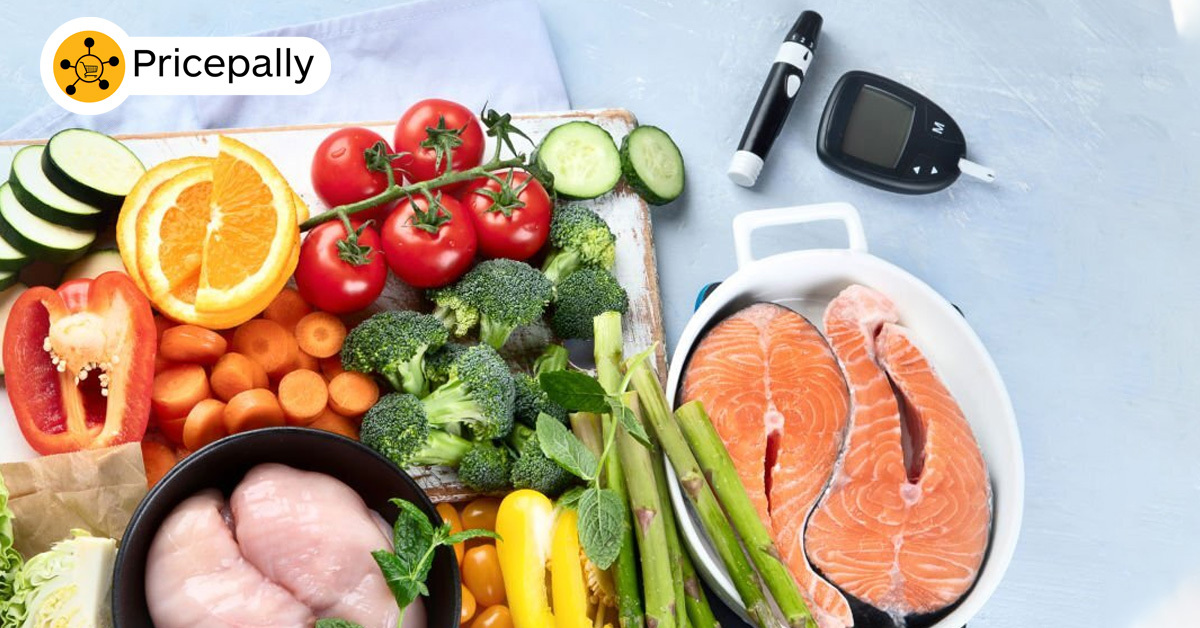
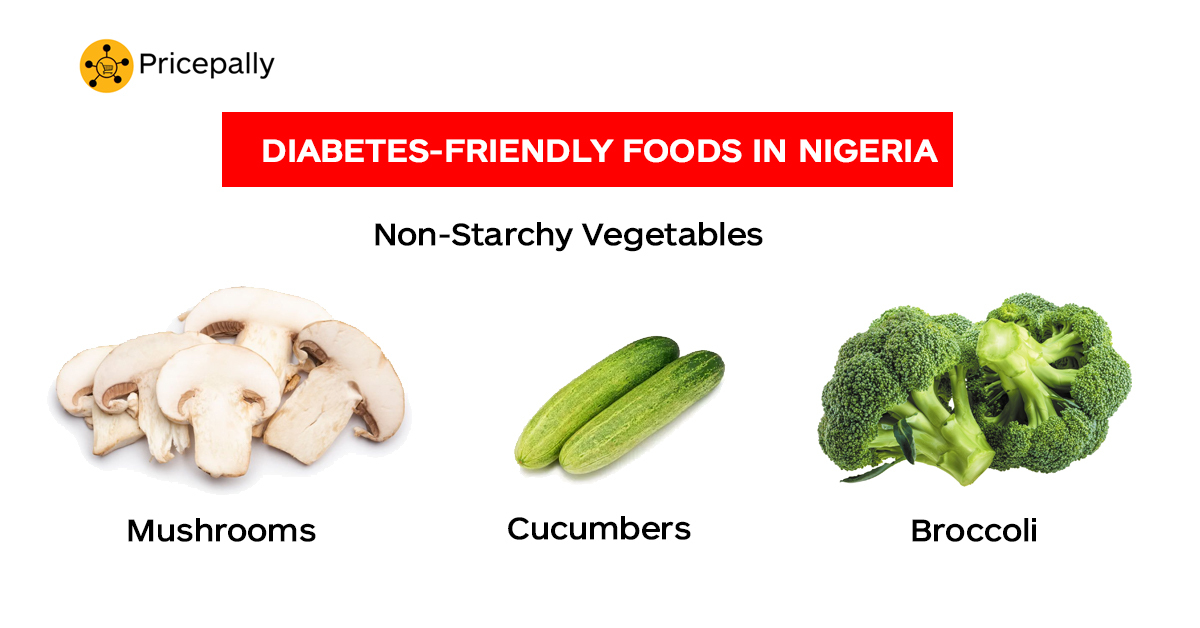


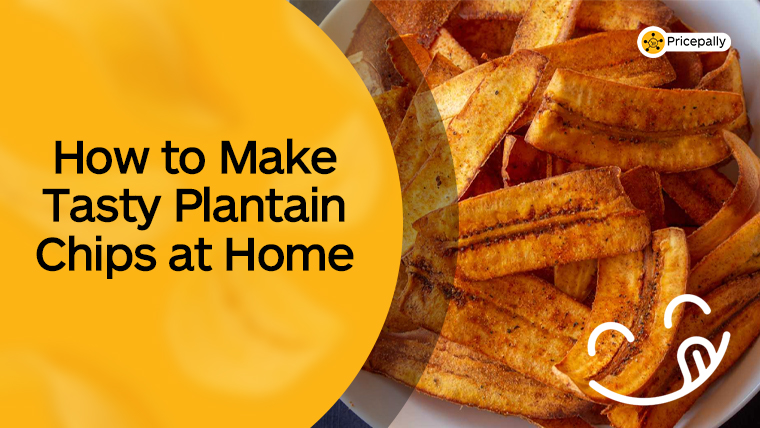

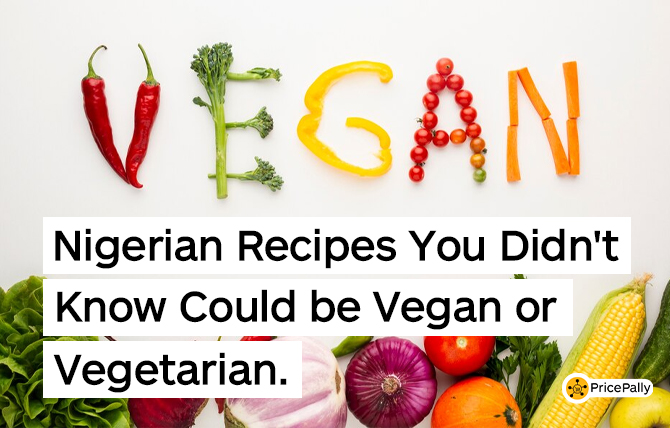

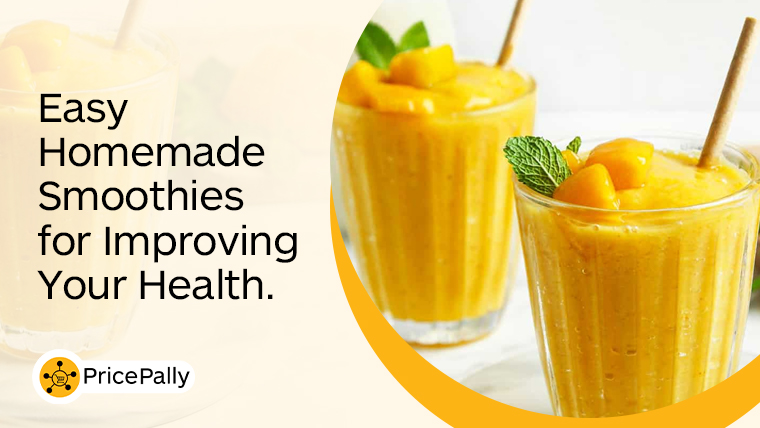
How Pricepally is reinventing Bulk buying Fresh-farm foods in Nigeria.
PRICEPALLY FOOD PRICE INDEX
WORLD EARTH DAY 2021
Will Standardized Food measurement become widely adopted in Nigeria?
What’s The Rave About Smoked Fish?
PricePally Partners with Trade Lenda to Provide Easier Access to Loans for Farmers and Suppliers
PricePally and Stanbic IBTC Partner to Make Grocery Shopping More Affordable with Buy Now, Pay Later
Easy Homemade Smoothies for Nourished Health